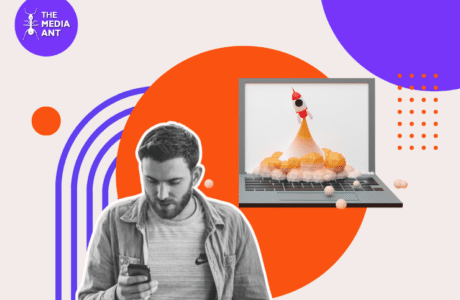Haldiram’s, the name synonymous with authentic Indian snacks and sweets, has captured hearts (and taste buds!) not only in India but around the globe. From a humble shop in Bikaner to becoming India’s largest snack company, Haldiram’s journey is a fascinating blend of tradition, innovation, and marketing brilliance.
In this blog, we delve into Haldiram’s marketing strategies through the decades, uncovering the key campaigns, initiatives, and branding moves that have propelled this iconic brand to its current status.
The Origin Story: A Snack Legacy is Born (1937)
In 1937, Ganga Bishan Agarwal, affectionately known as Haldiram Ji, started a small shop in Bikaner, Rajasthan. The cornerstone of his business was the now-famous Bhujia, made with a secret recipe that quickly became the talk of the town.
Marketing in this era was purely organic—word-of-mouth recommendations fueled the brand’s initial popularity. The focus on authenticity, taste, and quality laid the foundation for Haldiram’s future success.
Regional Expansion: Kolkata Calls (1970)
The 1970s marked a turning point as Haldiram’s expanded to Kolkata. The move was strategic, as Kolkata’s rich culinary culture made it an ideal market for sweets and snacks.
The introduction of branded packaging was a game-changer, as it elevated Haldiram’s products from local delicacies to recognizable, premium offerings. Packaging became a marketing tool, showcasing the brand’s commitment to quality and hygiene.
Going National: The Delhi Chapter (1990)
By the 1990s, Haldiram’s was ready to capture the national market. A new plant in Delhi marked its foray into North India, catering to a growing demand for branded snacks.
The brand leveraged India’s evolving consumer preferences by introducing single-serve, affordable snack packs. This move made Haldiram’s a household name, especially among middle-class families seeking affordable yet high-quality snacks.
The Ready-to-Eat Revolution (2003)
In 2003, Haldiram’s ventured into the ready-to-eat (RTE) food category, launching products like Pav Bhaji, Dal Makhani, and Rajma Chawal. This bold move catered to urban consumers looking for convenient yet authentic meals.
The tagline “Instant Authenticity” resonated deeply with customers, emphasizing homemade flavors in a modern, easy-to-use format. This diversification was backed by aggressive in-store promotions and sampling campaigns.
Going Global: The Taste of India (2010)
Haldiram’s stepped onto the global stage in 2010, exporting products to over 50 countries. The “Taste of India, Loved Worldwide” campaign focused on tapping into the Indian diaspora while introducing international consumers to Indian flavors.
Strategically partnering with global retail giants and featuring localized ads in target markets, Haldiram’s established itself as a beloved brand abroad.
Digital Awakening: Social Media Engagement (2014)
With the rise of digital marketing, Haldiram’s embraced platforms like Facebook, Instagram, and YouTube. The brand capitalized on festive seasons like Diwali and Holi, creating engaging campaigns with offers and limited-edition packaging.
Interactive posts, recipe videos, and influencer collaborations helped Haldiram’s build a strong digital presence. Their Diwali hashtag campaign, #LightsOfHaldirams, was a massive success, boosting both online and offline sales.
Crowning Glory: India’s #1 Snack Brand (2017)
By 2017, Haldiram’s had become India’s largest snack company. The brand adopted influencer marketing to review its diverse product line, launching campaigns like #SnackSultan, which celebrated Haldiram’s as the ultimate snack destination.
Collaborations with food bloggers and YouTubers expanded the brand’s reach among millennials and Gen Z, reinforcing its position as a leader in the snack industry.
E-Commerce Boom: Snacks at Your Doorstep (2020)
The pandemic shifted consumer behavior, and Haldiram’s responded by ramping up its e-commerce strategy. Partnering with platforms like Amazon, BigBasket, and Swiggy, the brand offered snack bundles and introduced the message “Stay Home, Snack Safe.”
Their ability to adapt quickly to the changing landscape solidified their presence in the online shopping space.
A Healthy Twist: Wellness Trends (2023)
Haldiram’s recognized the growing demand for health-conscious products and introduced a range of baked, low-calorie, and gluten-free snacks.
The “Snack Right, Snack Light” campaign, supported by fitness influencers and nutritionists, targeted health-conscious consumers while ensuring the brand’s core promise of taste remained intact.
Strengthening Market Presence: Prataap Snacks Acquisition (2024)
In 2024, Haldiram’s announced negotiations to acquire a majority stake in Prataap Snacks, known for its Yellow Diamond chips. This strategic move signals Haldiram’s ambition to dominate the potato chip market, further diversifying its product portfolio.
The acquisition showcases Haldiram’s commitment to innovation and its vision to remain a snack industry powerhouse.
The Winning Formula: Haldiram’s Marketing Mix
Haldiram’s success is rooted in its well-executed marketing mix:
1. Product
- Diverse range of snacks, sweets, and RTE meals.
- Authentic flavors catering to both traditional and modern palates.
2. Price
- Affordable pricing for mass appeal.
- Strategic pricing for single-serve packs and premium offerings.
3. Place
- Ubiquitous presence in grocery stores, supermarkets, and online platforms.
- Expansive global distribution network.
4. Promotion
- Festive campaigns during Diwali, Holi, and Ramadan.
- Social media, influencer marketing, and engaging ad campaigns.
Conclusion: A Legacy of Taste and Trust
Haldiram’s journey from a small shop in Bikaner to a global snack giant is a testament to its ability to blend tradition with innovation. By staying true to its roots while embracing modern trends, Haldiram’s has become a beloved brand across generations and geographies.As the brand continues to expand and evolve, one thing remains certain: Haldiram’s will always be the “Snack Sultan” of India.





